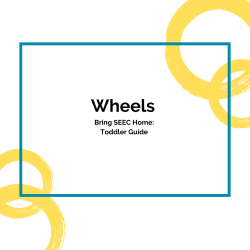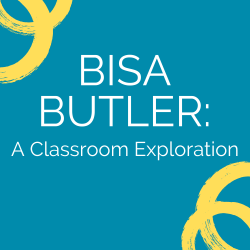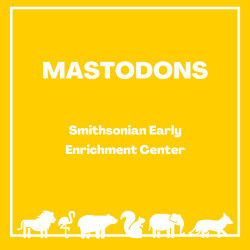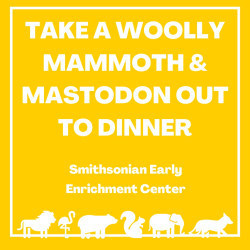Smithsonian Early Enrichment Center
Nestled in the nation’s capital in the richest museum complex in the world is the Smithsonian Early Enrichment Center, a model early childhood program that places children at the center of every experience. SEEC utilizes an emergent curriculum, following the children's interests to teach content and developmental skills through objects in the museums and community.
Smithsonian Early Enrichment Center's collections
Wheels
<p>Why do bicycles have wheels? Why do different bikes have different sized wheels? Learn about high wheel bicycles and geared bicycles and race different objects down a ramp.</p>
 Smithsonian Early Enrichment Center
Smithsonian Early Enrichment Center
19
Bisa Butler: A Classroom Exploration
<p>How can you create art using fabric? This classroom exploration is on Bisa Butler an artist who creates portraits using quilting techniques. Look closely at "<em>I Go To Prepare A Place For You</em>" a quilted portrait of Harriet Tubman. Compare and contrast the quilted portrait to the photograph which inspired it. To learn more about quilting techniques, you will look at the patterns, textures, colors, and fabrics in a variety of quilts. </p>
<p>Create your own fabric inspired art. Start by choosing fabric. Consider how the fabric feels. Practice new skill sets of sewing and stitching. Learn to thread a needle and make zig-zags like Bisa Butler. This project was inspired by a Smithsonian Early Enrichment Center's <a href="https://seecstories.com/tag/bisa-butler-project/">Teacher Feature on Bisa Butler.</a> </p>
 Smithsonian Early Enrichment Center
Smithsonian Early Enrichment Center
35
Mastodon
<p>We often talk to children about the importance of being flexible and adapting to new situations. This lesson about mastodons focuses on how physical adaptations help animals live in different environments. By looking at the different body parts of both a mastodon and a modern day elephant, children are able to see similarities/differences and predict why these traits changed from the ice age period to present day. What about these physical traits help the animal in their environment? By observing and predicting, children are practicing their critical thinking skills and gaining deeper understandings than if they were simply told the answer.</p>
<p>Designed as part of the Get a Head Start with the Smithsonian collaboration with the National Head Start Association, these activities support the following Head Start Early Learning Outcomes Framework (ELOF) standards:</p>
<p>- Goal P-LC 1. Child attends to communication and language from others.</p>
<p>- Goal P-LC 2. Child understands and responds to increasingly complex communication and language from others.<br></p>
<p>- Goal P-ATL 11. Child shows interest in and curiosity about the world around them.</p>
<p>- Goal P-ATL 13. Child uses imagination in play and interactions with others.<br></p>
<p>- Goal P-SCI 1. Child observes and describes observable phenomena (objects, materials, organisms, and events).</p>
<p>- Goal P-SCI 2. Child engages in scientific talk.</p>
<p>- Goal P-SCI 3. Child compares and categorizes observable phenomena.</p>
<p>- Goal P-SCI 5. Child plans and conducts investigations and experiments.</p>
<p>- Goal P-SCI 6. Child analyzes results, draws conclusions, and communicates results.</p>
<p><strong>Goals for Scaffolding for Infants/Toddlers:</strong></p>
<p>- Goal IT-LC 12. Child comprehends meaning from pictures and stories.</p>
<p>- Goal IT-ATL 7. Child shows interest in and curiosity about objects, materials, or events.</p>
<p>- Goal IT-ATL 8. Child uses creativity to increase understanding and learning.</p>
<p>- Goal IT-C 1. Child actively explores people and objects to understand self, others, and objects.</p>
<p>- Goal IT-C 2. Child uses understanding of causal relationships to act on social and physical environments.</p>
<p><br><br></p>
<p><br></p>
 Smithsonian Early Enrichment Center
Smithsonian Early Enrichment Center
20





